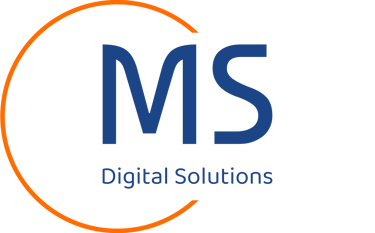Decision making
Turning raw data into strategic gold helps businesses stay competitive and grow sustainably. It’s about transforming analysis into clear, actionable strategies. This process follows key steps that turn insights into real impact. Keep reading to discover how data-driven decisions can move your business forward.
MARKET RESEARCH
3/5/20253 min read
Turning raw data into strategic gold: a guide to data-driven decision making
The process of moving from data analysis to actionable strategies is critical for businesses aiming to maintain competitiveness and achieve sustainable growth.
This transformation involves several steps, from data collection and processing to drawing meaningful conclusions and implementing these insights effectively.
The process: from raw data to operational decisions
The journey from data to decision making is multi-faceted, involving several stages. Below are the key steps in this process:
1. Data collection and integration
The first step involves gathering data from various sources, both internal and external. This could include customer behavior, operational performance, market trends and more. The challenge here is ensuring that the data is clean, accurate and relevant.
Tools like databases, cloud storage solutions and APIs play a crucial role in collecting and integrating data from disparate sources.
2. Data processing and analysis
Once the data is collected, it needs to be processed and analyzed. Data preprocessing is essential to ensure it is formatted correctly, free from errors and ready for analysis. Techniques like data cleaning, normalization and transformation are crucial here.
Advanced analytics tools such as Python libraries (Pandas, NumPy) or specialized software like Microsoft Power BI and Tableau can then be used to conduct exploratory data analysis (EDA), identify patterns and generate insights.
3. Extracting insights
The next step is to derive actionable insights from the analyzed data. This involves identifying trends, correlations and anomalies that could inform business decisions.
Machine learning algorithms, predictive analytics and statistical models often come into play at this stage. The goal is to move beyond surface-level observations and uncover deeper insights that can shape strategic initiatives.
4. Decision making
With insights in hand, the next step is to translate these findings into actionable strategies. This is where data-driven decision-making comes into play. Business leaders must ensure that insights align with the organization’s objectives and are feasible within the existing operational structure.
Decision-making processes are enhanced when supported by clear visualizations and real-time data dashboards that help executives understand the implications of the insights.
5. Implementation and action
The final step involves translating strategic decisions into operational actions. This could include adjusting marketing campaigns, streamlining operations or launching new product initiatives based on the insights gathered.
Effective communication and collaboration across departments are key at this stage, ensuring that the necessary resources and teams are aligned to implement the strategy successfully.
Case study: turning data insights into action
A prime example of successfully transforming data into action is Netflix’s recommendation engine. The company collects data on viewing habits, preferences and user interactions to analyze patterns and predict future content preferences.
By using advanced machine learning algorithms, Netflix provides personalized recommendations to users, which in turn increases engagement and subscription retention.
Netflix’s data-driven approach is not just about understanding individual user preferences, but also analyzing global trends to determine what new content should be produced. The recommendations and content creation strategies are based on deep data insights, which have been crucial in establishing Netflix as a leader in the entertainment industry.
This case demonstrates how data analysis can lead to a direct impact on business outcomes, improving customer satisfaction, increasing engagement and driving revenue growth. It also highlights the importance of continuously refining and optimizing data processes to stay ahead of evolving trends.


💡 Tools and technologies that facilitate the process
To successfully navigate the journey from data to action, organizations need the right tools and technologies. Here are some essential tools that support the data-to-decision process:
✔️ Business intelligence (BI) tools
BI tools like Tableau, Power BI and Qlik Sense help transform raw data into interactive dashboards, visualizations and reports. These platforms allow users to explore data in real-time, identify trends and make informed decisions quickly. They are crucial for businesses that need to monitor key performance indicators (KPIs) and make strategic adjustments on the fly.
✔️ Data analytics platforms
For more advanced data processing and analysis, platforms like Google Analytics, SAS Analytics and Apache Hadoop provide businesses with the infrastructure needed to handle large datasets.
These tools support deep analytics, predictive modeling and machine learning, enabling organizations to forecast future trends and optimize their operations.
✔️ Customer relationship management (CRM) systems
CRM tools such as Salesforce, HubSpot and Zoho CRM collect valuable customer data that can be used to personalize marketing efforts, improve customer service and predict future customer behavior.
Integrating CRM systems with analytics platforms allows businesses to combine historical customer data with current trends to make more informed decisions.
✔️ Cloud computing and storage solutions
Cloud platforms like AWS, Google Cloud and Microsoft Azure provide the infrastructure necessary to store and process large volumes of data.
These platforms offer scalability, security and flexibility, ensuring that businesses can access and analyze data without the need for costly on-premise hardware.
✔️ Machine learning tools
Machine learning platforms like TensorFlow, Scikit-Learn and PyTorch enable businesses to implement advanced algorithms that can analyze data, detect patterns and predict outcomes. These tools are particularly useful for organizations looking to automate decision-making processes and derive insights from complex datasets.
By leveraging the right processes, tools and technologies, organizations can turn raw data into valuable insights that inform strategic decisions and lead to tangible business outcomes.
As businesses continue to embrace data-driven strategies, those who master the process of moving from analysis to action will be best positioned for success in an increasingly competitive landscape.
MS Digital Solutions
Digital marketing, research, and consulting services tailored.
© 2025. All rights reserved.
